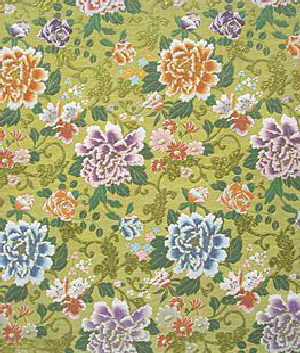
Later in theYuan Dynasty(1279-1368), Mongolians conquered Central China and the rulers then defined a tradition of decorating officer's dress with shining gold and silver. With the flourishing and exploitation of gold mines, weavers added real gold thread into Nanjing brocade. The shining brocade immediately won great favor of feudal kings and aristocrats and also was popular among ethnic minorities such as Mongolians, Tibetans and Uygurs. In the Yuan, Ming (1368-1644) and Qing (1644-1911) dynasties, rulers set up official special fabrics bureaus in Nanjing for the administration and monopoly of the brocade production and marketing. They listed it as one of the special royal tributes to emperors. Brocade technology was repeatedly refined despite high costs both in terms of time consumed and materials used. It was not long before the brocade surpassed the other famous silk products, and it obtained fame as a silk fabric with the greatest rarity and high technology.
In the middle of theQing Dynasty, the boom in the production of the brocade reached its climax. In the numerous fabrics trading households along theQinhuai Riverin Nanjing, weaving could be heard as it echoed day and night and an unprecedented outcome in brocade production was enjoyed. Records say that more than 30,000 looms were involved in brocade production and 300,000 people made a living on it.
